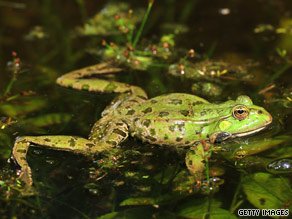
The world has a new alliance to save vanishing frogs, toads and salamanders.
A coalition of organizations established the Amphibian Survival Alliance this month to conserve species threatened by deadly fungus, habitat loss, pollution, pesticides and climate change. The scientists said amphibians are the world’s most threatened group of animals. Though they thrived on Earth for more than 360 million years, one in three of the 6,000 recognized amphibian species are now at risk of extinction and as many as 122 species have gone extinct since 1980, according to the International Union for the Conservation of Nature’s amphibian specialist group. “The world’s amphibians are facing an uphill battle for survival,” said James Collins of Arizona State University, co-chairman of the group. He said the new alliance, formed at the Amphibian Mini Summit at the Zoological Society of London, will focus efforts on the biggest threat to amphibians: infectious disease and habitat destruction. The group includes amphibian specialists working in the wild as well as those in zoos, aquariums and botanical gardens worldwide. “Amphibians have so much to offer humans,” said amphibian specialist Simon Stuart. “Many have an arsenal of compounds stored in their skin that have the potential to address a multitude of human diseases.” But as amphibians die out, so do opportunities to develop new medicines, he said. The southern gastric brooding frog, for instance, could have led to the development of a treatment for human peptic ulcers had it not gone extinct, Stuart said. “We simply cannot afford to let this current amphibian extinction crisis go unchecked,” he said. Andrew Blaustein, who began documenting amphibian declines two decades ago, said the loss of species was part of an overall biodiversity crisis. “Amphibians seem to have been hit the hardest of all vertebrate species,” said Blaustein, a professor of zoology at Oregon State University. “The long-term ecological repercussions of their decline could be profound, and we have to do something about it.”